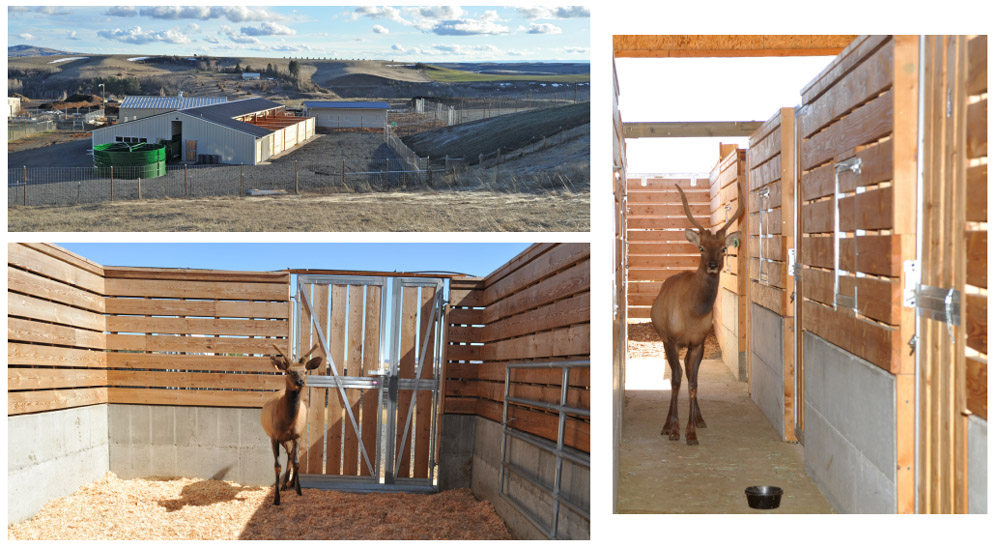Below is an update provided by Washington State University’s College of Veterinary Medicine.
Dr. Margaret Wild and her team constructed a research facility, completed in January 2020, that allows them to conduct controlled experiments without sacrificing the safety of the researchers, the local environment or the elk. The State of Washington, along with a $100,000 grant by the Rocky Mountain Elk Foundation, provided funding for the facility. Following a delay due to the COVID-19 pandemic, research started in earnest in October 2020.
Where It Is and How It Works
Located in a quiet place on the WSU campus, the facility consists of several separately fenced holding pastures and a main building with individual stalls where studies are conducted. The entire facility is surrounded by a secondary perimeter fence. An aisle wide enough for one elk runs the length of the main building, beginning with one of the holding pastures and ending with a round handling tub and squeeze chute. Ten 16×24 foot stalls with tall wooden walls line the aisle of the main building. Stalls are accessible via a pivoting door that can swing into the stall or into the aisle depending on the direction elk need to be moved.
These descriptions may appear ordinary, but the simplicity of the floorplan is actually its strength. When the doors swing into the aisle, they act as natural barriers, blocking the path back to the pasture and funneling the elk towards the round handling tub. The round handling tub, like a revolving door, then turns the elk so they can go back to their stall after first passing through the squeeze chute where physical exams can be done safely. The simplicity of the floorplan enables elk to move through the facility with fluidity, reducing the stress placed on the animal and decreasing the risk of harm to them and the researchers.
Research Update
This winter and spring we conducted the first experiment in the new elk research facility. The findings from that study are exciting and are an important step in improving our understanding of transmission of treponeme-associated hoof disease (TAHD). Our preliminary results indicate that TAHD can be transmitted to otherwise healthy elk through exposure to soil contaminated with hooves from affected elk.
Go here for additional details about the research.
(Photo source: College of Veterinary Medicine – Washington State University)
